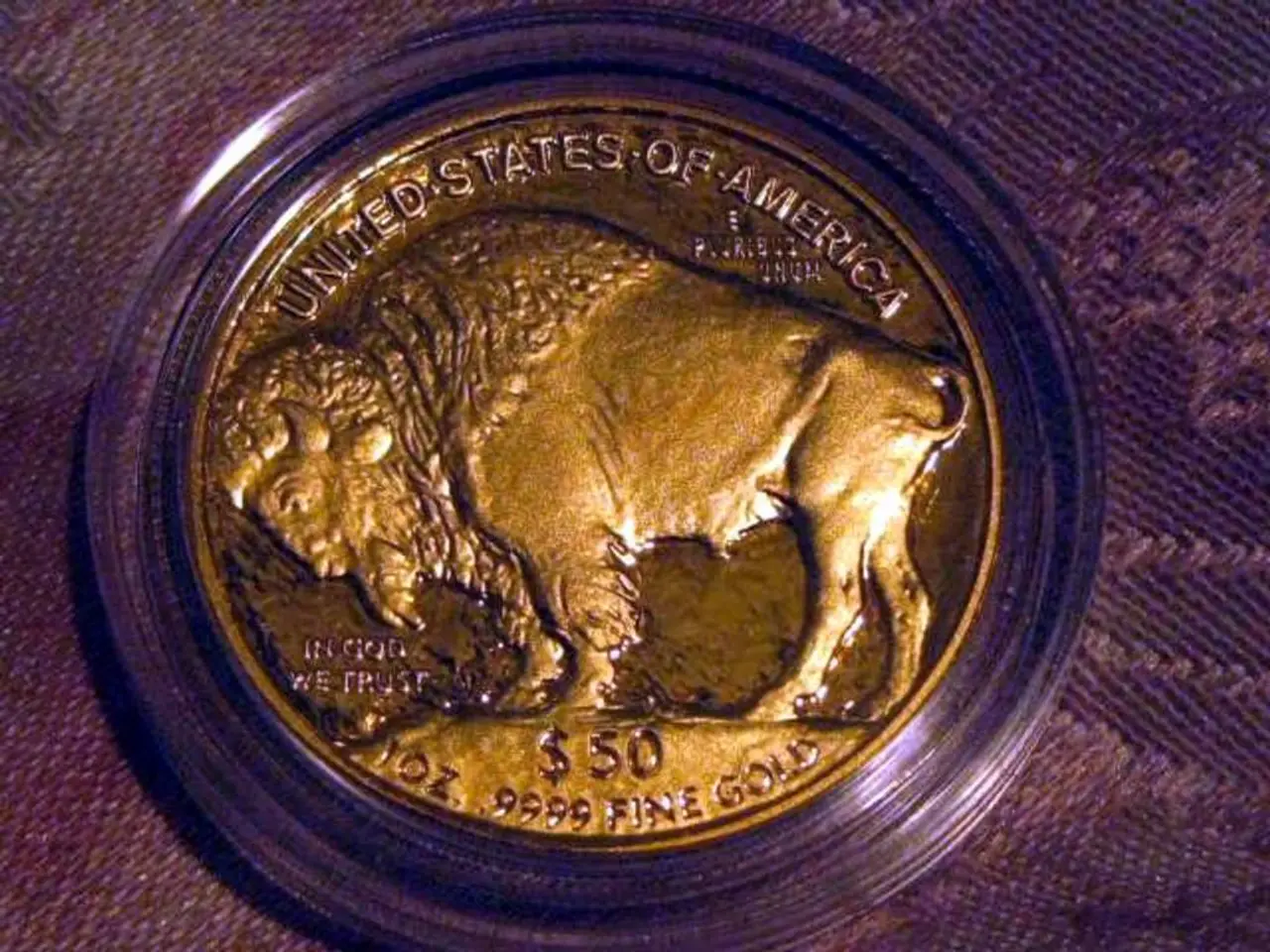US gold refining industry takes a hit due to imported tariffs from Switzerland
In a surprising move, the Trump administration has imposed a 39% tariff on 1-kilogram and 100-ounce gold bars imported into the United States, effective from July 31, 2025. This decision, made by U.S. Customs and Border Protection, has caused significant disruption in the global bullion market.
The tariffs primarily affect Switzerland, a major global supplier of these gold bars. One-kilo gold bars are the most commonly traded size on the Comex futures market, and they form the majority of Swiss gold exports to the U.S. This move has increased gold premiums and disrupted trade, sparking concern and criticism from Swiss politicians and the gold industry.
Swiss President Karin Keller-Sutter has disagreed with the high tariff, attributing the increase in the U.S. trade deficit with Switzerland to the rise in gold exports in 2024. The Swiss delegation's attempts to negotiate a resolution in Washington were unsuccessful, leading to political debate in Switzerland about whether the gold industry should bear the economic costs or find alternative shipping arrangements, such as rerouting shipments through third countries.
Market reactions included volatility in gold futures prices, but as of early August 2025, prices have stabilized somewhat amid announcements that the White House plans to issue further clarifications via an executive order in the near future, though no firm date has been given.
Key Aspects:
- Tariff rate: 39% on 1-kg and 100-ounce gold bars
- Effective since: July 31, 2025 customs ruling
- Targeted products: 1 kg and 100-ounce gold bullion bars
- Affected exporters: Especially Switzerland, major global supplier
- Market impact: Increased gold premiums, disrupted trade
- Political response: Swiss politicians demanding industry responsibility or alternative measures
- US response: White House working on tariff clarification
This tariff move represents a significant shift from earlier expectations that precious metals, given their monetary status, would be exempt from Trump's broader tariff programs. The current status is that the tariffs remain in place, creating trade and political challenges, with potential further updates pending from U.S. executive clarifications.
- The United States' implementation of a 39% tariff on 1-kilogram and 100-ounce gold bars, effective from July 31, 2025, has instigated a substantial disruption in the global bullion market.
- Switzerland, a key player in the gold industry, is one of the countries most affected by this tariff because they are a major global supplier of these gold bars.
- India, which heavily relies on the U.S. for importing gold, might face an increase in gold prices due to the 39% tariff added to 1-kilogram and 100-ounce gold bars.
- Finance experts are closely monitoring the impact of this tariff on personal-finance, as well as the broader implications it may have on the overall industry, with some indicating a potential shift in investing strategies.
- With sports leagues and educational institutions relying on sponsorships and advertising, there are concerns about how this decision might affect industry partnerships and relationships with businesses in the United States.
- Technology companies may experience delays in importing components or equipment if they contain gold, leading to potential issues in production timelines and supply chains, especially if alternative sources cannot be quickly identified or established.




